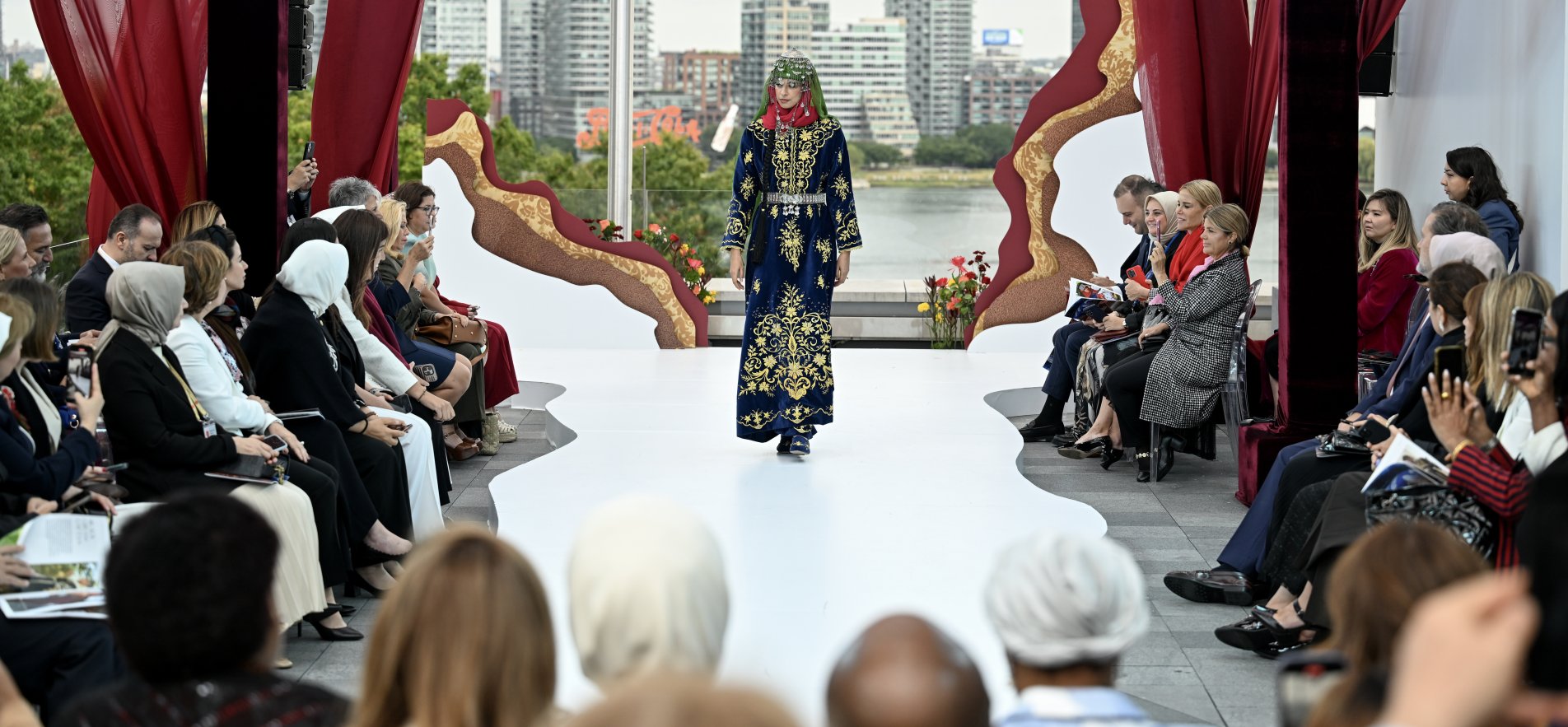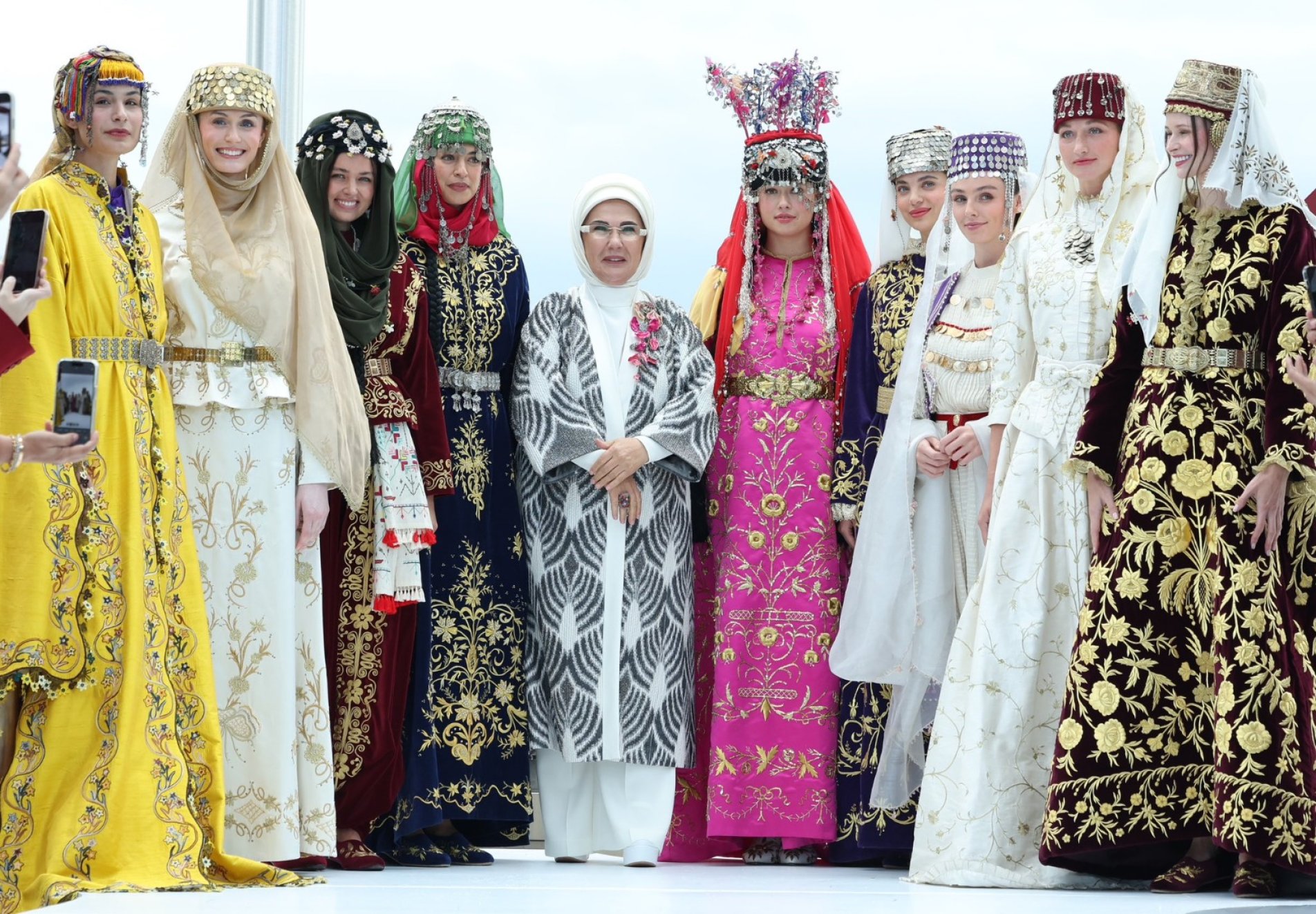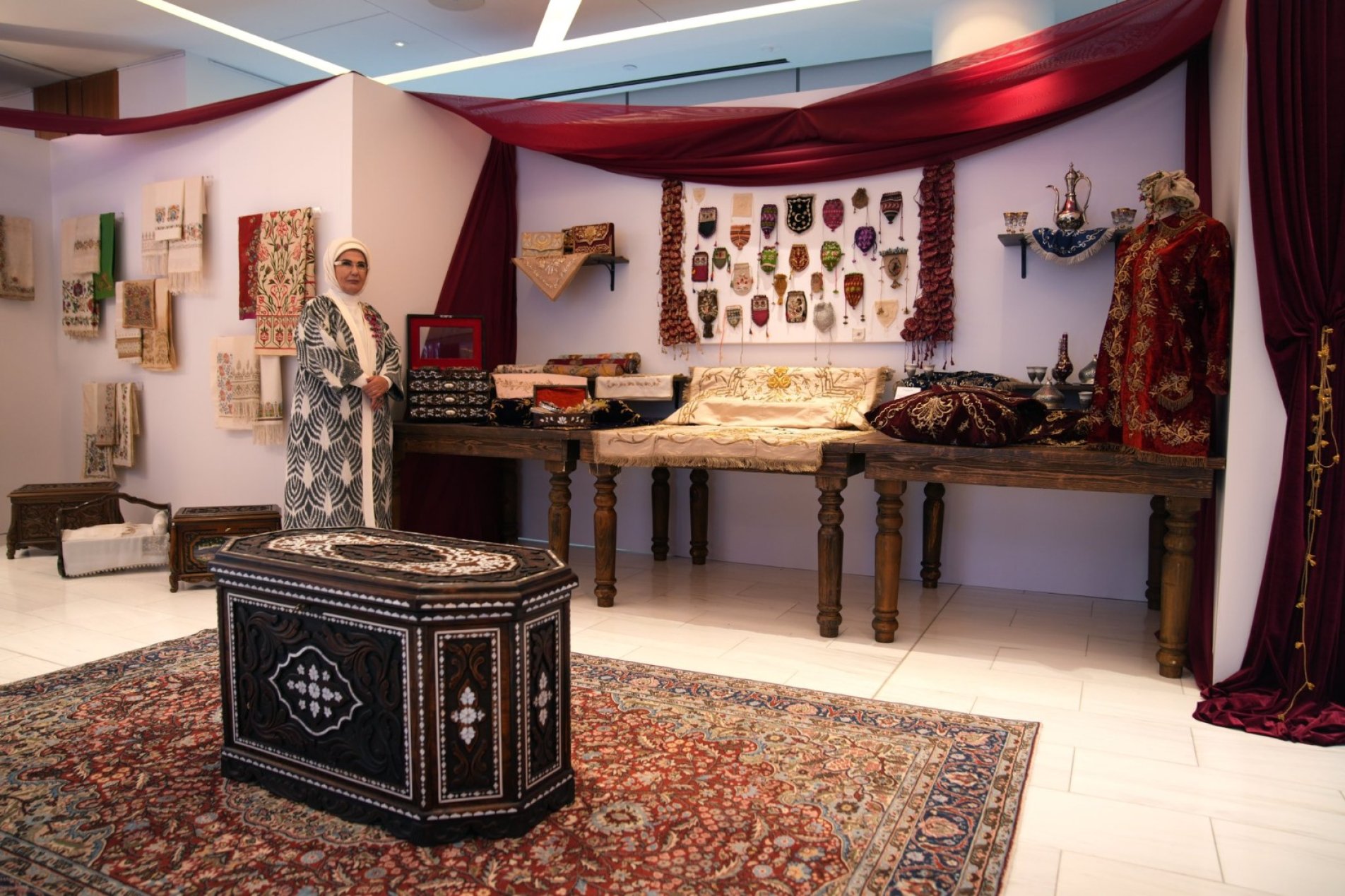The program, hosted by Emine Erdoğan, was attended by a range of distinguished guests, including the First Lady of Nigeria, Oluremi Tinubu; the First Lady of Kosovo, Prindon Sadriu; the First Lady of Mauritius, Sayukta Roopun; the First Lady of Fiji, Filomena Katonivere; the First Lady of Guatemala, Lucrecia Peinado; the wife of the Chairman of the Presidency of Bosnia and Herzegovina, Mirela Becirovic; the wife of the Greek Prime Minister, Mareva Grabowski Mitsotakis; the wife of the Albanian Prime Minister, Linda Rama; and the wife of the Prime Minister of Eswatini, Philile Dlamini. Additionally, ministers, members of parliament, editors-in-chief, and senior representatives from international organizations were also present.
In her speech at the program, Emine Erdoğan expressed her happiness at hosting her guests at the Turkish House (Türkevi) on the occasion of the special event, where Ottoman and Anatolian dowries, consisting of the handcrafted and meticulous works of Turkish women, would be explored.
Stating that traditional handicrafts are living documents that can be read line by line, Emine Erdoğan said, "Anatolia, whose cultural basin covers a wide geography from Asia to Africa, has a deep-rooted memory in this sense. Throughout history, the people of the region have embroidered every aspect of life onto objects with their skillful hands and beautified the places they inhabited with fine touches."
Emine Erdoğan emphasized that wedding ceremonies, which signify the establishment of a new home, are a comprehensive presentation of this rich culture. She stated, "Turkish weddings, which encompass many rituals from the bridal bath to the henna night, from the bride's trousseau to the dowry chest, are unique ceremonies where many aspects of our traditional handicrafts are showcased. Among these ceremonies, the dowry tradition holds a special place in our culture. A dowry reflects the values that make a house a home-patience, care, and love-transferred into objects and spaces. From intricately woven carpets and coverings to clothing and even cosmetics, every item a person might need in their home finds its place in the dowry chest."
Every stage of the dowry chest involves solidarity
Emine Erdoğan explained that dowry items, in addition to meeting everyday needs, serve as special letters that symbolize women's emotions, wishes, and dreams.
Emine Erdoğan emphasized that while the dowry may seem like a special preparation for the bride and her new home, it is actually a social activity that involves a large family and circle of friends. She stated that every stage of the process, from the preparation to the moving of the bride's dowry chest into the new home, reflects a sense of social unity and solidarity.
Emine Erdoğan stated that this sense of unity took on a different dimension in the dowry culture of the Ottoman palaces. She expressed that the dowry items prepared for Ottoman sultans, meticulously crafted from precious materials, were carried to the bride's new home in a grand ceremony attended by the public.
Emine Erdoğan emphasized that this ceremony, also known as the "bridal procession," offers a unique celebration of Turkish dowry culture. She stated: "While sharing all this cultural heritage related to the dowry tradition, I would like to highlight that our effort goes beyond a simple tribute to history. We are living in an era where automation and digitalization surround us, gradually erasing labor and originality. I wholeheartedly believe that cultural heritage, when properly valued, holds the potential to provide solutions to the crises we are being dragged into as humanity.
Emine Erdoğan stated that they launched the "Miracle of the Turkish Needle" project to revitalize the maturation institutes established in 1945, with the aim of preserving and passing on the Turkish handicraft tradition to future generations. She noted that "our maturation institutes seek to revive the bridal treasures that our ancestors carefully kept in their chests and merge them with contemporary designs. As cultural representatives of Turkish traditional handicrafts, they introduce Türkiye to the international arena while offering an inspiring model to the world through a sustainable production system. I have no doubt that the modern interpretations of our dowries - symbols of love and loyalty passed down through generations - will bring a new vision to various sectors, from fashion to home textiles. I wholeheartedly believe they will inject quality and elegance into the global market, which is dominated by factory-made products that have lost their soul and are characterized by short lifespans. In the face of the threats of standardization and cultural desolation that envelop the world, I hope that the timeless language of embroidery and the labor of Anatolian women will inspire the entire world and remind us of the values we have forgotten."
Emine Erdoğan thanked everyone who contributed to the exhibition and fashion show organized as part of the program, especially the staff of the maturation institutes. She stated, "I respectfully commemorate all the women who have woven love and respect into the lives of their families with these delicate touches for centuries, leaving behind an elegant and graceful legacy to humanity through their hard work and dedication."
Great Acclaim for the Fashion Show and Exhibition
Following Emine Erdoğan's speech, traditional Ottoman and Anatolian bridal gowns were showcased in a fashion show. During the show, Erdoğan provided information about the dresses to the First Ladies, explaining the details of the embroidery. After the highly praised fashion show, a family photo was taken with the participants.
As part of the program, an exhibition area was set up on one floor of the Turkish House (Türkevi), featuring dowries embroidered with motifs from Ottoman and Anatolian cultures, wedding costumes, handmade carpets, and objects reflecting Turkish culture. After traditional Turkish coffee and sherbet were offered to the First Ladies, they toured the exhibition area.
Emine Erdoğan explained to her guests, with whom she personally engaged, how the dowry is prepared by the brides, the significance of each motif embroidered on the products, and the value of leaving handcrafted items for future generations.
In the exhibition area, Emine Erdoğan emphasized the significance of the henna night in Turkish culture. In a section designed to resemble a traditional Turkish bath, she explained the meaning of the bridal bath.
In the exhibition area, in a section designed to resemble a tree, Emine Erdoğan shared information about the culture of the wishing tree (nahıl ağacı) in Anatolia with her guests, while some of the guests hung their wishes on the tree.


































